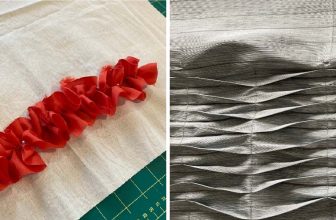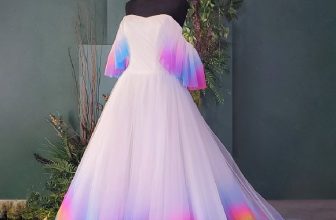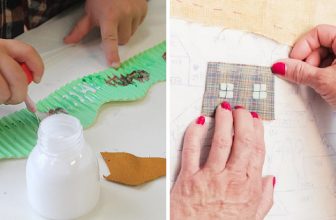Can You Print on Silk Fabric?
Printing on silk fabric is a bit different than printing on other types of fabric. Because silk is a natural fiber, it tends to be more delicate than synthetic fibers.
As a result, you’ll need to take extra care when printing on silk to ensure that your design looks its best. Here’s what you need to know about how to print on silk fabric.
Block printing is another possible silk printing method, though it may be less precise than other methods. Ultimately, the best way to print on silk fabric will depend on your specific needs and preferences. With so many options available, you’re sure to find a method that works well for you.
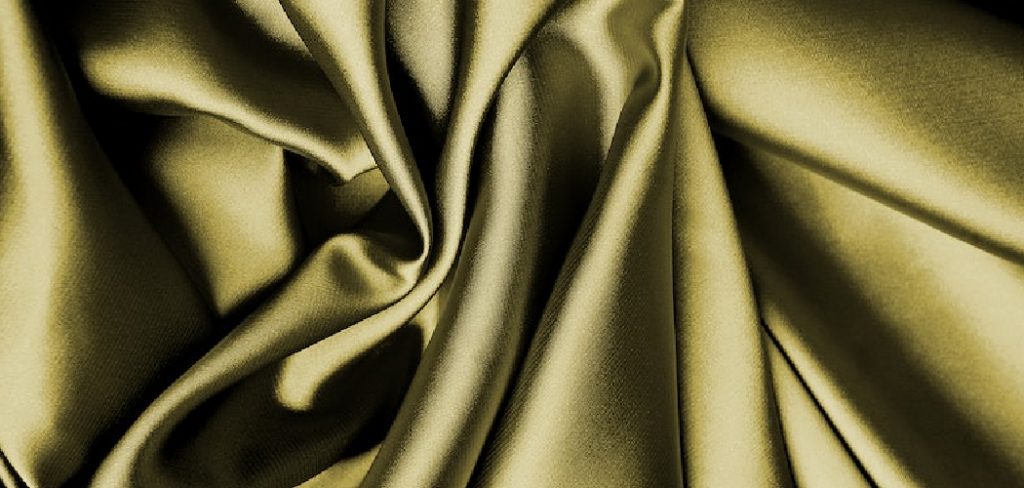
Why Should You Print on Silk Fabric?
Silk fabric has long been used for high-end clothing and other garments. It is prized for its softness, strength, and ability to hold color well. In recent years, silk fabric has also become popular for printing.
Thanks to advancements in digital printing technology, it is now possible to print photos, designs, and patterns onto silk fabric with stunning results.
There are many reasons why you might choose to print on silk fabric. For one, it can give your prints a luxurious and high-end look. Silk fabric also has excellent color saturation and can produce vibrant and richly-colored prints.
In addition, it is a very strong and durable fabric, meaning that your prints will last many years. Overall, printing on silk fabric offers several benefits that make it an ideal choice for a wide range of projects.
How to Print on Silk Fabric in 6 Easy Steps
Step 1: Prepping Your Design
The first step in printing on silk is to prep your design. If you’re starting with a digital file, you’ll need to ensure it’s high resolution. The last thing you want is for your printed design to be pixelated or blurry. Once you have a high-resolution file, you can either print it yourself or take it to a professional printer.
When printing your design, it’s important to use inkjet transfer paper. This type of paper is specifically designed for use with inkjet printers and will help ensure that your design prints correctly onto the silk fabric. Once you have your printed design, cut it out along the edges of the image.
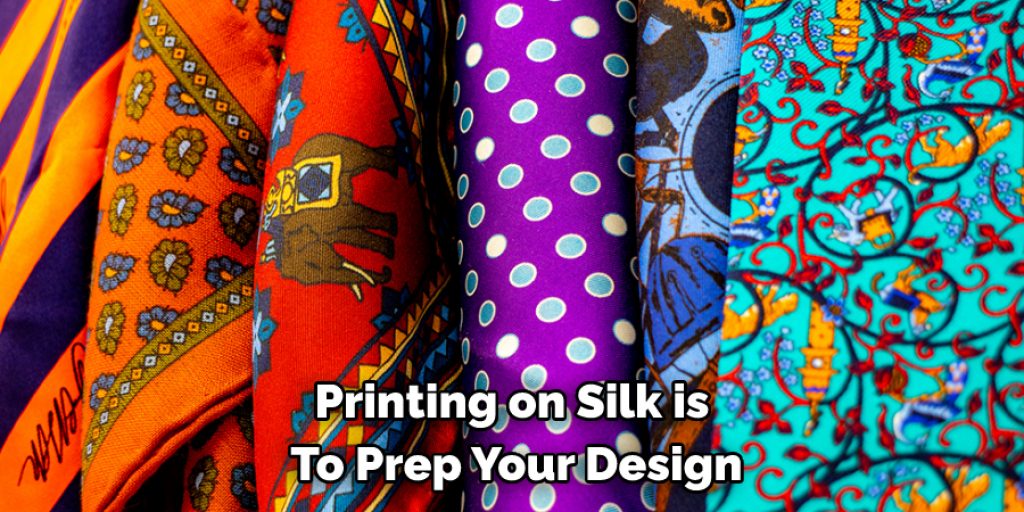
Step 2: Applying Your Design
Now it’s time to apply your design to the silk fabric. Start by pre-washing the fabric so that it’s clean and free of any dirt or debris that could prevent the transfer paper from adhering properly. Once the fabric is dry, lay it out flat on a work surface.
Place the transfer paper face-down onto the fabric and smooth it out so that there are no wrinkles or bubbles. Use a hot iron to press down onto the transfer paper for about 30 seconds. Then carefully peel back the transfer paper to reveal your printed design!
Step 3: Sealing Your Design
Once you’ve transferred your design onto the silk fabric, it’s time to seal it. This will help to ensure that your design doesn’t fade or crack over time. The best way to do this is with a fabric sealant spray. Simply spray the entire surface of the fabric with an even coat of the sealant and allow it to dry for about an hour.
Step 4: Trimming Excess Fabric
Once your design has been sealed, you’ll need to trim away any excess fabric that’s not part of the print. Use sharp scissors to carefully cut away any excess material around the edges of your design. This will help to give your finished product a professional look.

Step 5: Finishing Touches
Once you’ve trimmed away any excess fabric, it’s time for the finishing touches. If desired, you can add fringe or other decorative elements to the edges of your design. You can also use a sewing machine to create a hem along the edges for a more finished look.
Step 6: Enjoying Your Design
The last step is to enjoy your newly printed silk fabric! Whether you choose to use it for clothing or home decor, you can be sure that your design will look beautiful and professional for years to come. Now get ready to show off your new creation!
That’s it! You’ve now learned how to print on silk fabric in just six easy steps. With the right supplies and a little bit of patience, you can create beautiful designs that will last for years to come. So get creative and start printing!
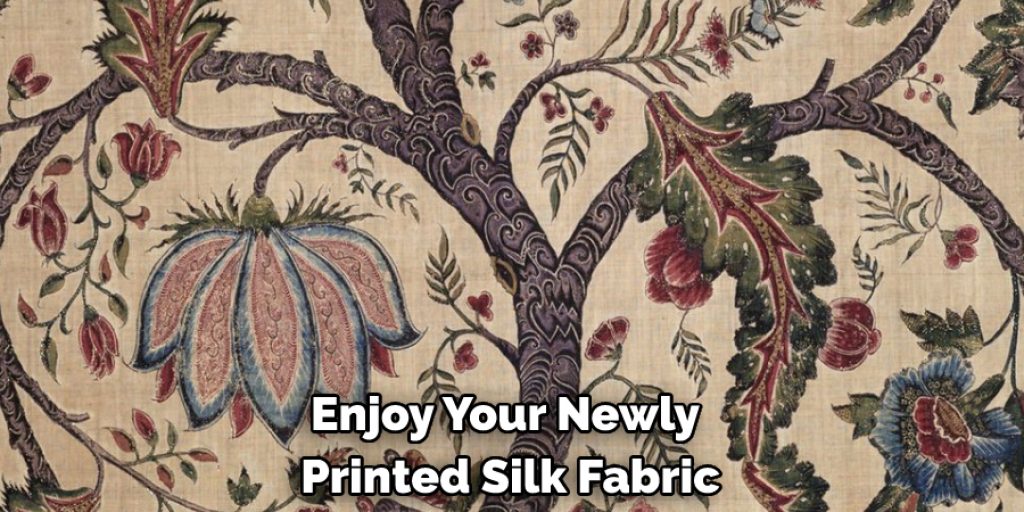
Things You Need to Know Before Printing on Silk Fabric
When it comes to printing on silk fabric, there are a few things you need to know to get the best results. First, silk is a delicate fabric, so it’s important to use a gentle setting on your printer. Second, you’ll need to use an inkjet printer; laser printers won’t work with silk.
Third, make sure to use heat-set inks; these inks won’t smear or run when they come into contact with moisture. Finally, always test your design on a scrap piece of fabric before printing on your final product. By following these simple tips, you can ensure that your printed silk fabrics look beautiful and professional.
5 Benefits of Printing on Silk Fabric
1. Vibrant and Rich Colors
When you print on silk fabric, the colors look vibrant and rich. This is because the silk fibers are able to absorb a lot of colors, resulting in a deep and saturated hue.
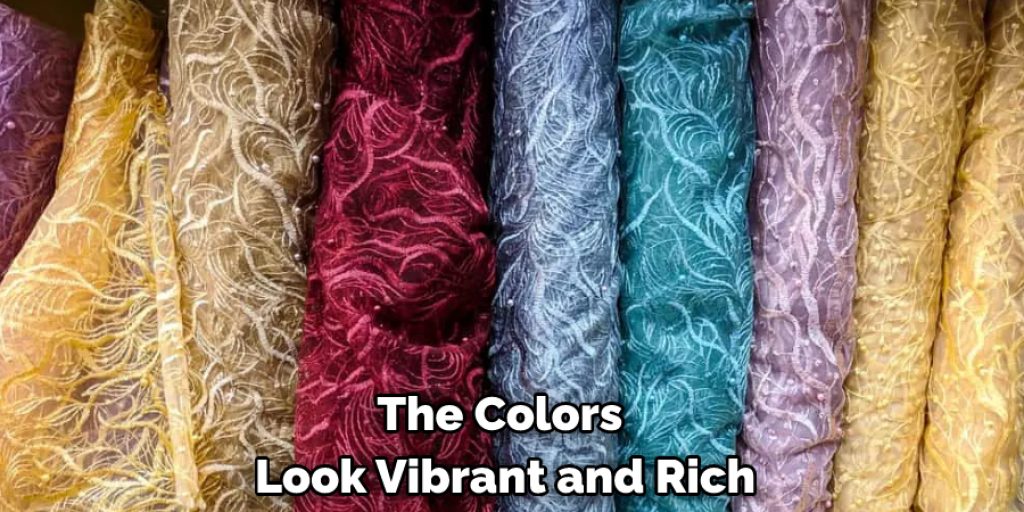
2. Luxurious Feel
Silk is a luxurious fabric that has a smooth, soft feel. When you print on silk, your design will have a high-end look and feel that will impress your clients or customers.
3. Durable
Despite its delicate appearance, silk is actually a very durable fabric. It is resistant to tearing and stretching, making it ideal for printing.
4. Breathable
Silk is a breathable fabric, allowing air to flow through it. This makes it ideal for summertime garments as it will help keep you cool and comfortable in warm weather.
5. Hypoallergenic
Silk is also hypoallergenic, meaning it won’t trigger allergies in people who are sensitive to certain fabrics.
Some Common Mistakes People Make When Trying to Printing on Silk Fabric
Printing on silk fabric can be a bit tricky, as the fabric is smooth and has a tendency to slip. Here are some common mistakes people make when trying to print on silk:
1.Not Using a Pettiskirt or Other Undergarment: Without something to grip the fabric, it will be very difficult to keep the fabric in place while you print.
2. Not Using a Frame: A frame will help to keep the fabric tight and prevent it from slipping.
3. Not Using Enough Ink: Silk is a very absorbent fabric, so you will need to use more ink than you would for other fabrics.
4. Not Letting the Ink Dry Completely: Silk dries very quickly, so make sure to let the ink dry completely before moving on to the next step.
By following these tips, you can avoid common mistakes and ensure that your printing project turns out just the way you want it to!
Pros and Cons of Printing on Silk Fabric
Silk is a luxurious and versatile fabric that has been used for centuries to create everything from evening wear to bedding. Silk is also an excellent choice for printing thanks to its smooth, lustrous surface. However, consider some pros and cons before choosing silk for your next printing project.
One advantage of printing on silk is that the fabric takes dye very well, resulting in rich, vibrant colors. Silk is also less likely to wrinkle than other fabrics, making it ideal for items that will be hung or displayed. On the downside, silk is one of the most expensive fabrics available, so it may not be the best choice if you are working with a limited budget.
Additionally, silk is a delicate fabric that can tear easily, so it is important to handle it with care. Overall, printing on silk can be a great way to achieve beautiful results, but it is important to keep the limitations of the fabric in mind. Printed silk makes a gorgeous scarf! But maybe not such a great pair of printed shorts.
Pros:
- Vibrant colors
- Less likely to wrinkle
- Luxurious feel
Cons:
- It Can be pricey
- Delicate fabric
- Tends to crease/wrinkle more than other fabrics
Conclusion
Printing on silk fabric is a great way to add a personal touch to any garment or textile project. With just a few simple steps, you can easily print your own designs onto silk fabrics at home!
Just remember to use an inkjet transfer paper and pre-wash your fabric before starting. With these tips in mind, you’ll be able to achieve beautiful results that are sure to impress! Thanks for reading our post about how to print on silk fabric.

